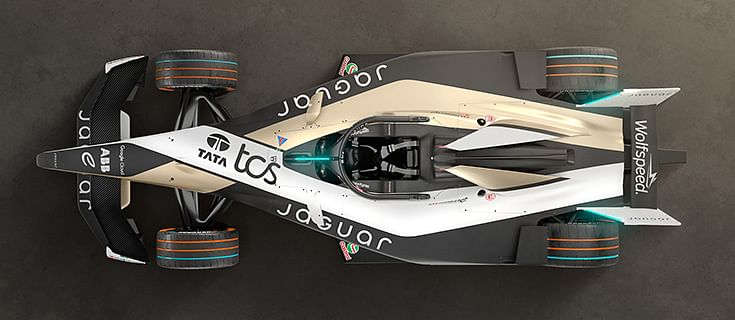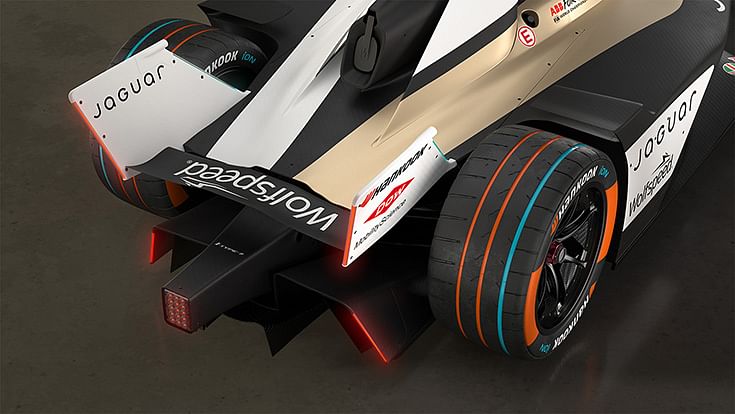Jaguar TCS Racing unveils potent Jaguar I-Type 7 for ABB FIA Formula-E Championship
Built to the new Formula E GEN3 Evo regulations, the Jaguar I‑Type 7 has an all‑new Jaguar powertrain and features 350kW all‑wheel‑drive traction, 600kW regenerative braking capability, new bodywork and new Hankook iON tyres; races from 0-100kph in 1.86 seconds
December 6 saw Jaguar TCS Racing unveil its all‑new ABB FIA Formula E World Championship contender – the Jaguar I‑TYPE 7 – on the eve of it turning a wheel in Free Practice 1 at the Sao Paulo E‑Prix and marking the beginning of Jaguar TCS Racing’s 2024/25 World Championship campaign. Jaguar TCS Racing has also revealed an all‑new livery for the duration of the season which features the team’s signature black, white and gold design.
“What an exciting week it has been to start our 2024/25 title campaign. Firstly, the reveal of the new Jaguar Type 00 in Miami and now the unveiling of our Jaguar I‑TYPE 7 in its official livery here in São Paulo, less than 24‑hours before it will be on‑track in the hands of Nick Cassidy and Mitch Evans. It’s an incredibly exciting time for the Jaguar brand and for us as reigning World Champions.
 The Jaguar I‑TYPE 7 is a significantly more advanced race car than its I‑TYPE 6 predecessor – the car that took Jaguar to victory in the 2024 Teams’ World Championship and Manufacturers’ Trophy titles.
The Jaguar I‑TYPE 7 is a significantly more advanced race car than its I‑TYPE 6 predecessor – the car that took Jaguar to victory in the 2024 Teams’ World Championship and Manufacturers’ Trophy titles.
“In parallel with our Season 10 Teams’ World Championship and Manufacturers’ Trophy wins with the Jaguar I‑TYPE 6, we have been designing, developing and testing the new Jaguar I‑TYPE 7. The all‑new Jaguar powertrain is at the start of its development journey but we have seen positive early signs and, along with all teams, we’ve been enjoying the challenge of maximising the new regulations and capability that comes with the shift into the GEN3 Evo era of Formula E. GEN3 Evo and the new homologation means Manufacturers have had the opportunity to introduce improved powertrain concepts and components, in addition to the common bodywork and all‑wheel‑drive capability. I am certain the changes are going to mean not only faster cars, but also an incredibly close and competitive season where most of the grid could be in a position to fight for podiums and wins.
“Most importantly, these new regulations give us further opportunities to develop and prove electric vehicle technology at an accelerated rate, and ensure those benefits are transferred to Jaguar’s future all‑electric vehicles for the benefit of our customers,” said James Barclay, Jaguar TCS Racing Team Principal.
 Hardware and software technology proven on‑track by Jaguar TCS Racing will transfer to the next generation of Jaguar all‑electric road cars
Hardware and software technology proven on‑track by Jaguar TCS Racing will transfer to the next generation of Jaguar all‑electric road cars
New Formula E GEN3 Evo regulations
The new GEN3 Evo era of Formula E introduced with Season 11 sees significant updates for the core FIA‑mandated areas of all cars (common components), and significant new technology opportunities for the manufacturers (manufacturer perimeter).
Bodywork updates shared by all teams include a new nose and improved aero that will enable cars to run closer than ever before, while new Hankook iON tyres offer 5‑10% more grip – and a significant challenge for all teams to understand their characteristics.
While maximum traction power remains the same at 350kW, for the first time the Front Powertrain Kit (FPK) is available to deliver traction too – meaning all‑wheel‑drive will be permitted in the Qualifying Duels, during the launch and Attack Mode phases of the races. Teams will be able to govern the distribution of that 350kW over the front and rear axles in those phases through their own software control systems, the transition between rear‑ and all‑wheel‑drive being particularly critical. Under braking, both front and rear powertrains will provide a combined 600kW of regen into the battery.
As a manufacturer, Jaguar has engineered a significant number of additional technological updates for the I‑TYPE 7. Chief among these is an all‑new rear powertrain comprising inverter, MGU and transmission. Not only is that powertrain packaged very differently to its predecessor to give the Jaguar I‑TYPE 7 better overall handling balance, but there has been a reduction in weight of electrical ancillary systems.
Within that Jaguar rear powertrain, the new MGU is even more efficient due to enhancements in thermal management technologies – meaning the I‑TYPE 7 can make more efficient use of available energy to go faster for longer. All of these powertrain updates mean the development of new software controls, with which the Season 11 regulations allow greater freedom for manufacturers in this area, have been a key focal point in pre‑season I‑TYPE 7 testing.
 Other Jaguar I‑TYPE 7‑specific hardware updates include re‑designed rear suspension. Along with the improved balance offered by the all‑new powertrain packaging, the new rear suspension will mean greater adaptability of handling characteristics between circuits.
Other Jaguar I‑TYPE 7‑specific hardware updates include re‑designed rear suspension. Along with the improved balance offered by the all‑new powertrain packaging, the new rear suspension will mean greater adaptability of handling characteristics between circuits.
Overall, the Jaguar I‑TYPE 7 is a significantly more advanced race car than its I‑TYPE 6 predecessor – the car that took Jaguar to victory in the 2024 Teams’ World Championship and Manufacturers’ Trophy titles.
Jaguar TCS Racing head into the new season with the support and expertise of its partners – Tata Consultancy Services (TCS), Wolfspeed, Dow, Castrol and Google Cloud – and official suppliers in Alpinestars, AERO, and Reflo.
The lights go out in São Paulo at 14:05 (GMT ‑3) today (Saturday 07 December).
RELATED ARTICLES
Skoda begins sale of made-in-India CKD Kushaq in Vietnam
Before production started, pre-series Kushaq vehicles covered over 330,000 kilometres on a variety of Vietnamese roads a...
Six Japanese companies join forces to expand use of recycled materials in new vehicles
Denso, Toray Industries, Nomura Research Institute, Honda Motor, Matec Inc and Rever Corporation have set up the BlueReb...
BYD selects Voestalpine as steel supplier for its Hungarian plant
The announcement of the Austrian steelmaker as a supplier demonstrates BYD’s strategic plan to source from high-quality,...





 By Autocar Professional Bureau
By Autocar Professional Bureau
 06 Dec 2024
06 Dec 2024
 3958 Views
3958 Views


























